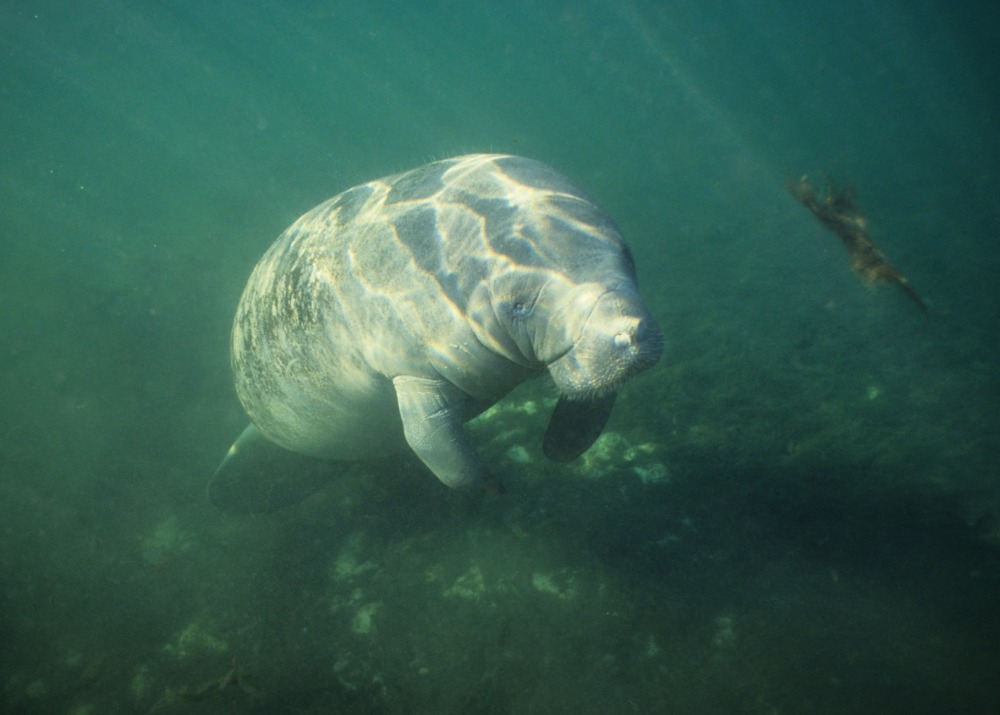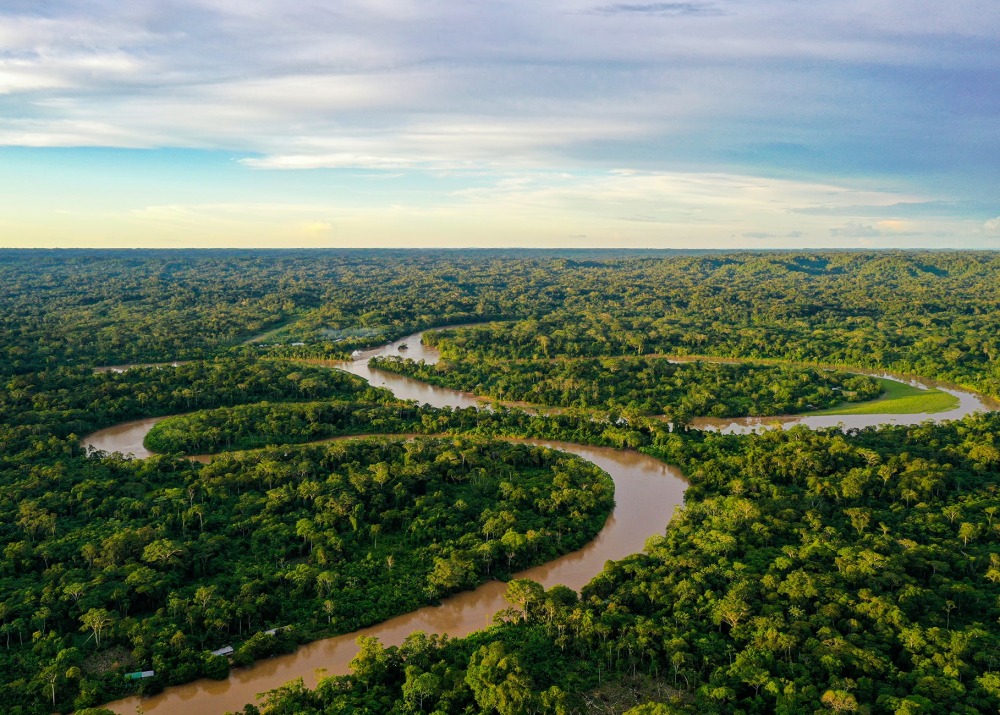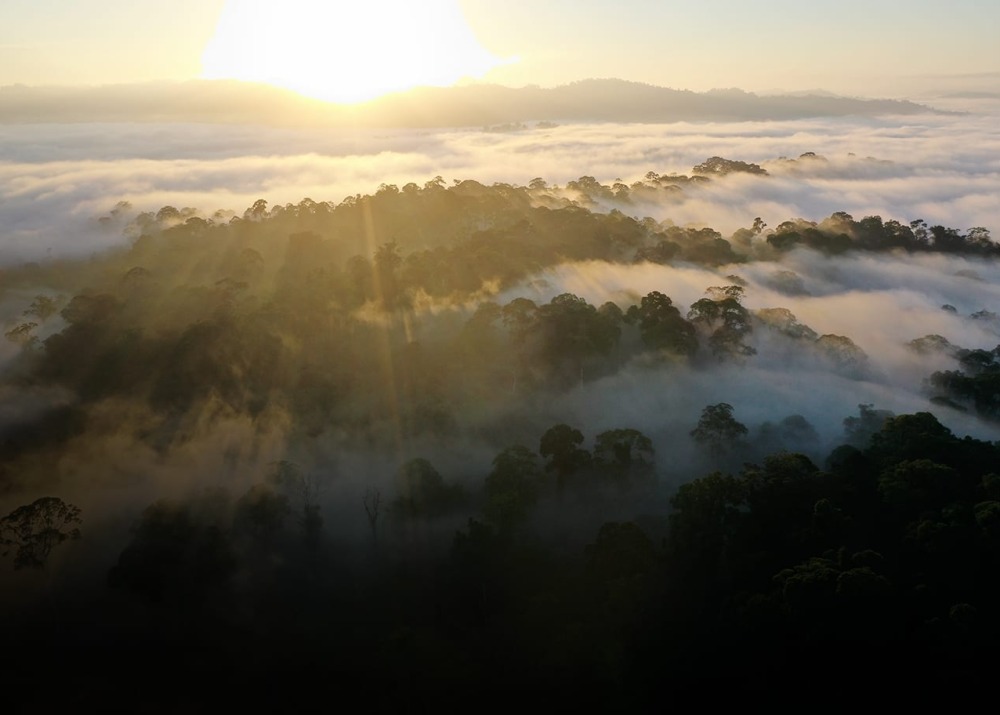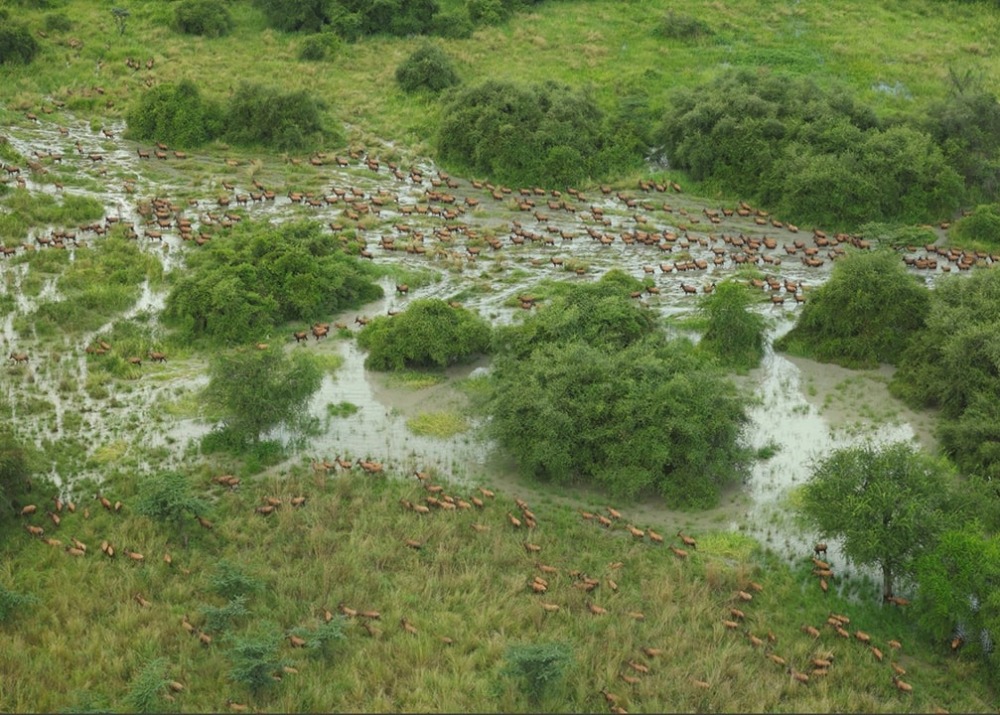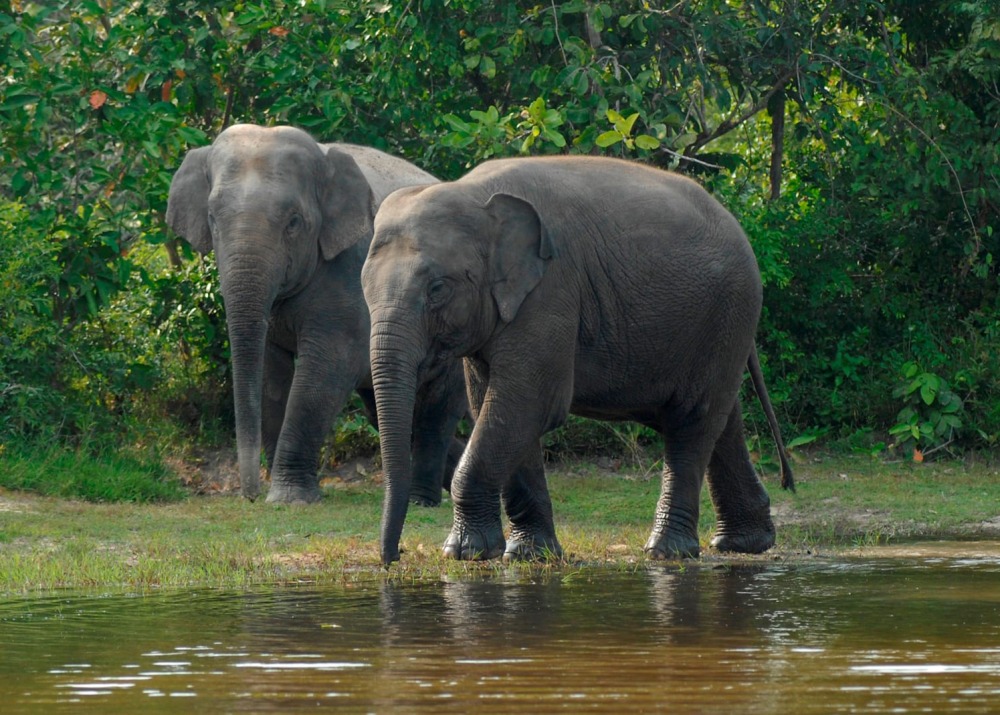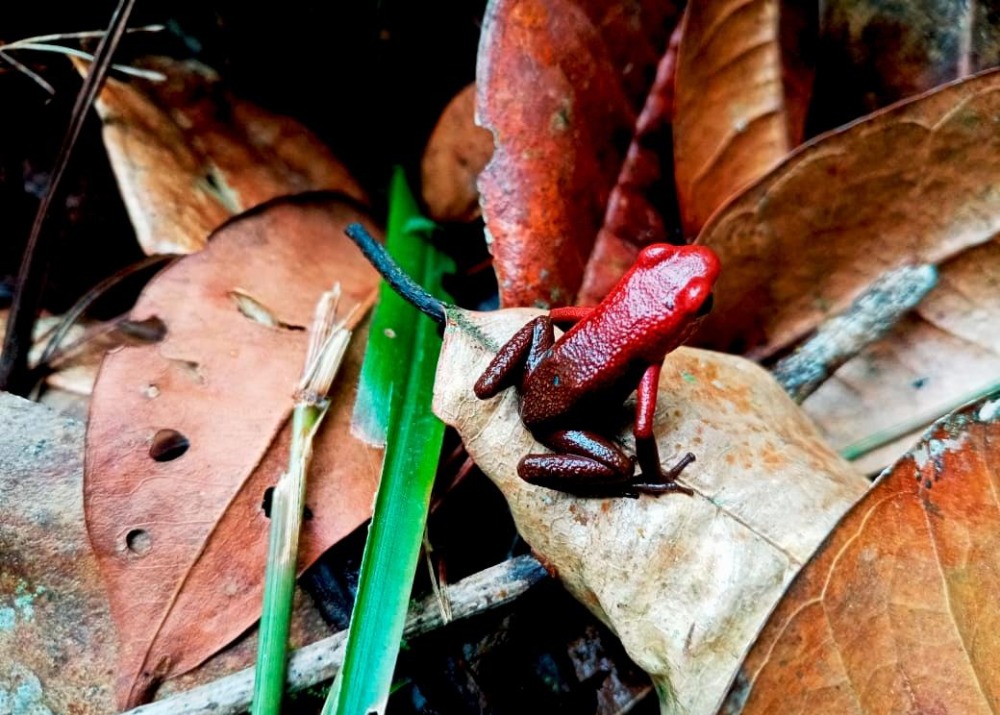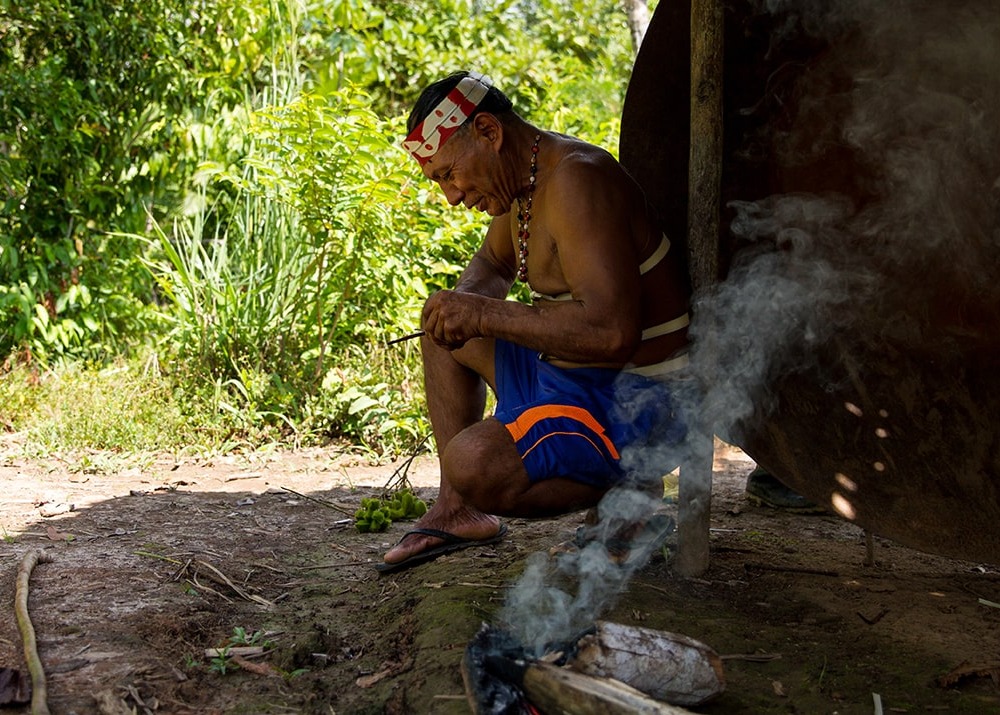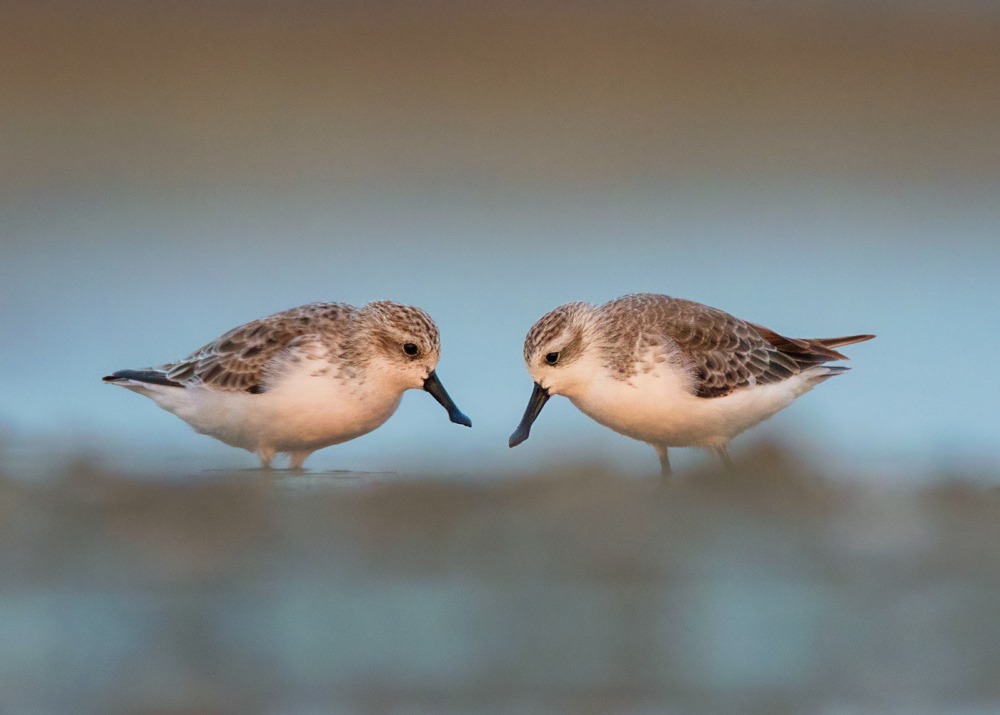A Mammal like no “Otter”
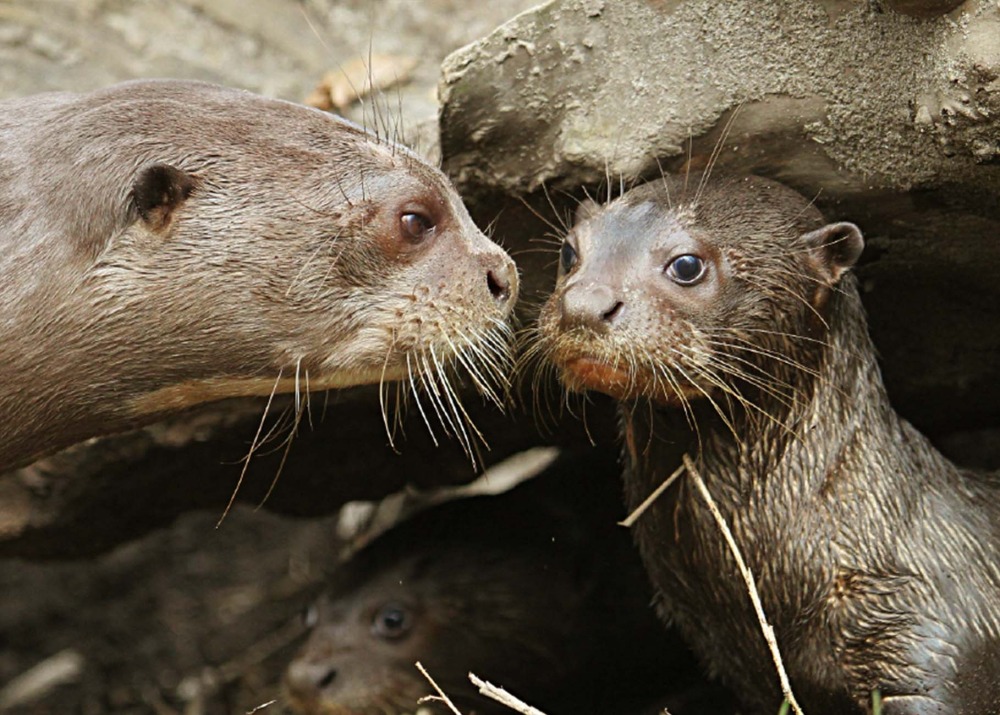
Muscular webbed feet, long, flexible bodies, and strong, rudder-like tails make the Endangered Giant Otter a powerful swimmer. In fact, these agile “Olympians” can reach a top swimming speed of 8.7 miles per hour—almost twice the speed of the fastest human swimmer in history, Michael Phelps.
Endemic to South America, small, fragmented populations of the Giant Otter are found in the rivers and creeks of three of South America’s major river systems—the Amazon, Orinoco and La Plata. Giant Otters burrow into riverbanks and under fallen logs to build their dens and establish their home territory.
Dependent on clean rivers and wetlands, Giant Otters hunt in the mornings and evenings—consuming up to nine pounds of fish, frogs and other aquatic creatures daily, including even small caimans, a reptile related to alligators. A top predator in these waterways, these carnivorous mammals control the populations of prey species and help keep the river ecosystem in balance.
But despite their aquatic super powers, they are unable to stave off habitat degradation and destruction.
As logging and mining activities, conversion to agriculture and fire destroy and degrade their riparian habitat, their population has declined by more than 50% over the past 25 years. Contamination from artisanal gold mining as well as pesticides and fertilizers degrades water quality for all things aquatic, as well as invertebrates, birds and mammals.
Rainforest Trust projects cover a total of nearly 19.7 million acres that overlap the range of the Giant Otter throughout the Amazon basin.
The world’s largest otter—and the longest member of the weasel family—the Giant Otter measures up to six feet in length and can weigh up to 75 pounds. Mid-day, they take a siesta. Sociable animals, Giant Otters live in groups of up to twenty individuals, and eat, sleep and play together as an extended family.
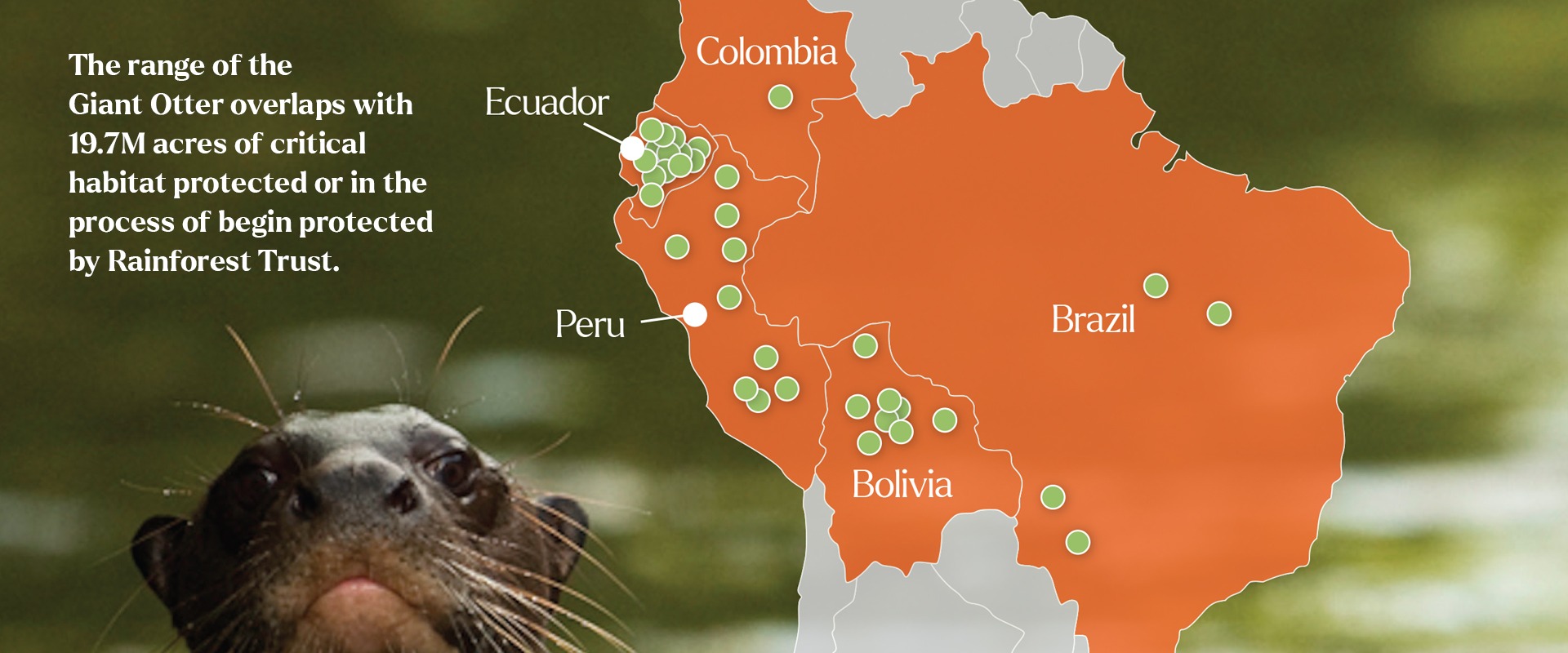
Sign up to receive the latest updates
"*" indicates required fields


